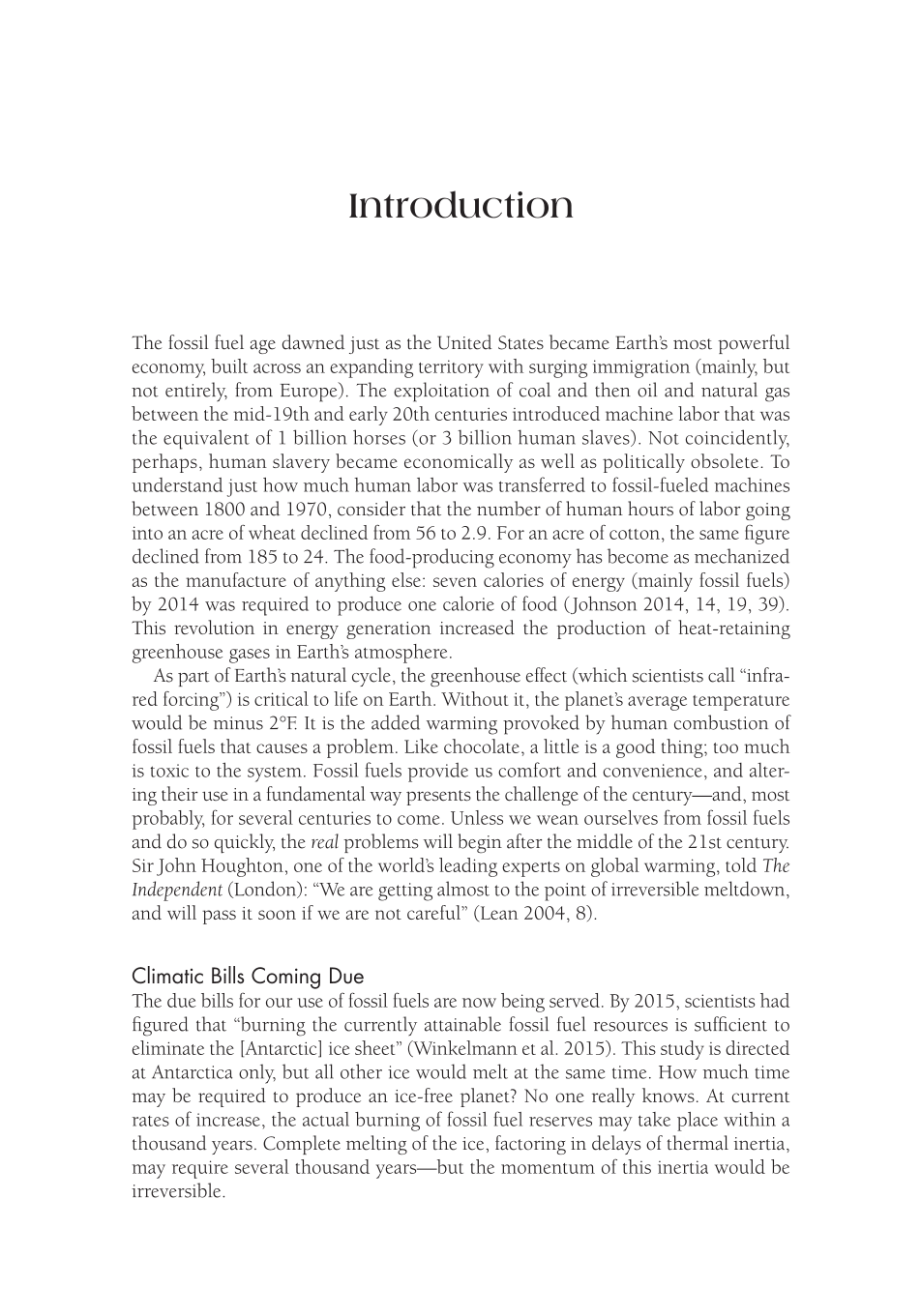Introduction
The fossil fuel age dawned just as the United States became Earth’s most powerful
economy, built across an expanding territory with surging immigration (mainly, but
not entirely, from Europe). The exploitation of coal and then oil and natural gas
between the mid-19th and early 20th centuries introduced machine labor that was
the equivalent of 1 billion horses (or 3 billion human slaves). Not coincidently,
perhaps, human slavery became economically as well as politically obsolete. To
understand just how much human labor was transferred to fossil-fueled machines
between 1800 and 1970, consider that the number of human hours of labor going
into an acre of wheat declined from 56 to 2.9. For an acre of cotton, the same figure
declined from 185 to 24. The food-producing economy has become as mechanized
as the manufacture of anything else: seven calories of energy (mainly fossil fuels)
by 2014 was required to produce one calorie of food ( Johnson 2014, 14, 19, 39).
This revolution in energy generation increased the production of heat-retaining
greenhouse gases in Earth’s atmosphere.
As part of Earth’s natural cycle, the greenhouse effect (which scientists call “infra-
red forcing”) is critical to life on Earth. Without it, the planet’s average temperature
would be minus 2°F. It is the added warming provoked by human combustion of
fossil fuels that causes a problem. Like chocolate, a little is a good thing; too much
is toxic to the system. Fossil fuels provide us comfort and convenience, and alter-
ing their use in a fundamental way presents the challenge of the century—and, most
probably, for several centuries to come. Unless we wean ourselves from fossil fuels
and do so quickly, the real problems will begin after the middle of the 21st century.
Sir John Houghton, one of the world’s leading experts on global warming, told The
In de pendent (London): “We are getting almost to the point of irreversible meltdown,
and will pass it soon if we are not careful” (Lean 2004, 8).
Climatic Bills Coming Due
The due bills for our use of fossil fuels are now being served. By 2015, scientists had
figured that “burning the currently attainable fossil fuel resources is sufficient to
eliminate the [Antarctic] ice sheet” (Winkelmann et al. 2015). This study is directed
at Antarctica only, but all other ice would melt at the same time. How much time
may be required to produce an ice-free planet? No one really knows. At current
rates of increase, the actual burning of fossil fuel reserves may take place within a
thousand years. Complete melting of the ice, factoring in delays of thermal inertia,
may require several thousand years—but the momentum of this inertia would be
irreversible.

























































































































































































































































































































































































































































































































































































































































































































































































































































































































































































































































































































































































